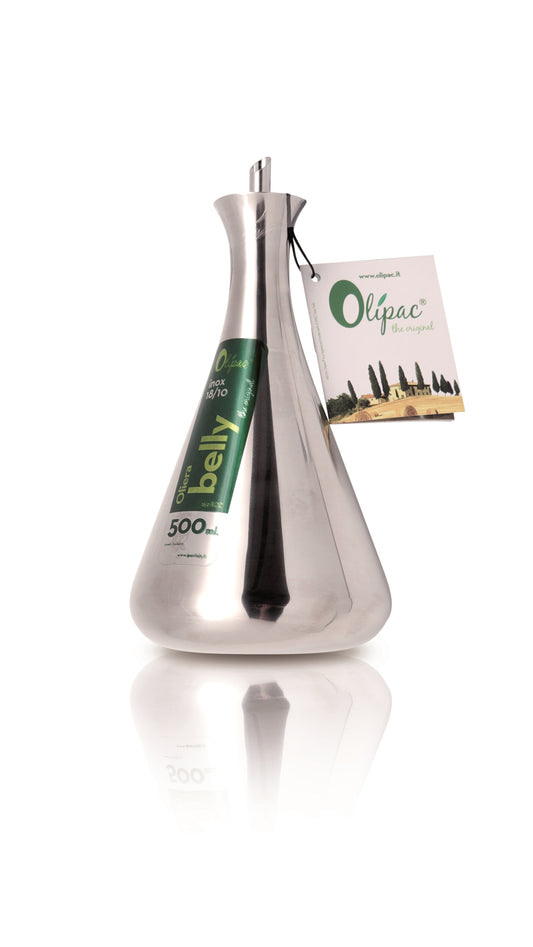Olipac
Passion for healthy and good food typical of the Tuscans, has inspired the patented stainless steel bottle to preserve at its best extra virgin olive oil and around it, a range of products designed specifically for the oil and its tasting.
The maintenance of the quality characteristics of the Extra Virgin Olive Oil over time (shelf-life) is closely linked to oxidation phenomena whose entity and dynamics depend on a complex of factors that together define the conservation methods.
The recent research of the University of Florence - Department of Economics, Engineering, Agricultural and Forestry Sciences and Technologies (DEISTAF) and of the "Laboratorio Chimico Merceoligico" - Special Company of the Chamber of Commerce of Florence, commissioned by IPAC SpA (Tuscan company that produced the first 18/10 stainless steel bottle for food that has been patented and introduced on the market) - confirms a significant qualitative advantage of the conservation of Extra Virgin Olive Oil in Olipac.

Olipac was born from experience but also from scientific research.
Laboratory studies show the great advantages of the steel oil cruet: after 4 months the glass has altered the characteristics of the product.
The advantage of this new packaging solution allows to keep longer a higher concentration in antioxidant phenolic compounds, to reduce the degree of oxidation and to maintain positive (fruity) sensory characteristics at the same time as the decrease in the appearance of defects related to the phenomena of oxidation. This evidence translates into a substantial extension of the life of a product during storage.
Olipac is also a container in line with ecological sustainability: stainless steel is hygienic, perfectly neutral towards food, easy to clean, unbreakable, has a self-healing surface and is one of the most recycled materials (in an unlimited way ) in the world.
Today the average of the recycled stainless steel contained in each stainless steel product is 60%.
Furthermore, the weight of the steel bottle is approximately 30% lower than that of glass containers, therefore the energy saving in the transport of the goods is significant.
- Featured
- Best selling
- Alphabetically, A-Z
- Alphabetically, Z-A
- Price, low to high
- Price, high to low
- Date, old to new
- Date, new to old















